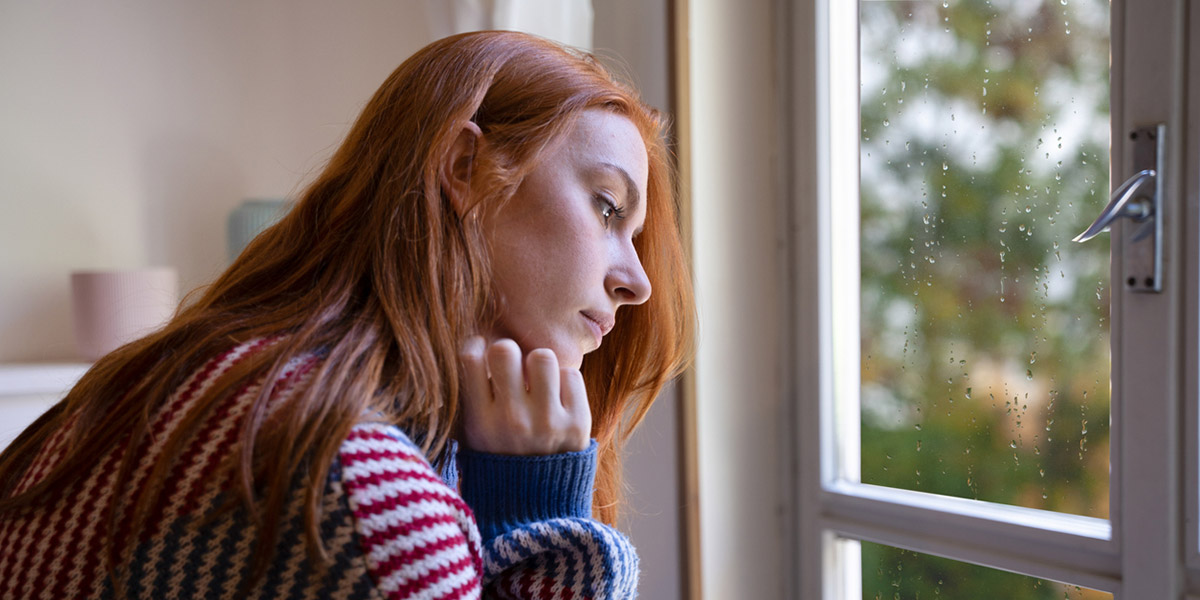Major depressive disorder is a potentially debilitating condition that can impact people of all ages and genders. Studies suggest that certain times of the year may be particularly difficult for people who have this disorder. Research also indicates that the seasonal impact may be especially significant for people in certain demographic groups.
What Is Major Depressive Disorder?
According to the fifth edition of the Diagnostic and Statistical Manual of Mental Disorders (DSM-5), a person must experience at least five of the following symptoms for at least two consecutive weeks to be diagnosed with major depressive disorder:
- Sadness, hopelessness, and other signs of depressed mood
- Little to no interest in pleasurable activities
- Significant unintentional weight loss or gain due to changes in appetite
- Abnormal sleep patterns, which can include either insomnia or hypersomnia
- Psychomotor agitation or retardation
- Persistent exhaustion or fatigue
- Sense of worthlessness or inappropriate guilt
- Difficulty concentrating, focusing, or making decisions
- Recurring thoughts of death and dying, which may include suicidal ideation
These symptoms must occur most days, and they must last for most of the day. They must also be severe enough to cause “clinically significant distress” or undermine a person’s ability to function in one or more important areas of life.
Some people only have one major depressive episode, while others are subject to recurrences of these symptoms. Among those who have recurring episodes of major depressive disorder, research suggests that seasonality, age, and gender may influence the onset and severity of such episodes.
Age, Gender, & Major Depressive Disorder
The National Institute of Mental Health (NIMH) has reported that about 21 million adults in the United States (or about 8.4% of the population ages 18 and above) had at least one major depressive episode in 2020. The NIMH also collected the following statistics related to age, gender, and major depressive disorder:
- Depressive episodes are more common among women than men. In 2020, 10.5% of adult women and 6.2% of adult men had at least one major depressive episode.
- The rate of depressive episodes decreases with age. In 2020, about 17% of young adults ages 18-25 had a major depressive episode. During the same year, major depressive disorder affected about 9.1% of adults ages 26-49 and 5.4% of older adults ages 50 and above.
Globally, the prevalence of major depressive disorder is lower than it is in the United States – but the gender imbalance is consistent. According to a February 2022 article in the journal Frontiers in Psychiatry, about 3% of women and 1.8% of men throughout the world have major depressive disorder.
Seasonality & Major Depressive Disorder
It’s not uncommon for external factors such as shorter days and colder weather to have a slight impact on mood. But for some people who have major depressive disorder, the autumn and winter months can be exceedingly difficult.
Sources such as the National Alliance on Mental Illness (NAMI) refer to this phenomenon as major depressive disorder with a seasonal pattern.
NAMI notes that decreased exposure to natural light during certain times of the year may negatively impact the production and transmission of serotonin, a neurotransmitter that is associated with mood, emotions, appetite, sleep, and other automatic functions.
NAMI has also reported that seasonality’s impact on the symptoms of major depressive disorder appears to be strongest among younger people, women, and those who live at higher northern latitudes.
Research Into Age, Gender, & Seasonality
Several studies have documented seasonal differences in depression, with age and gender also identified as potential influences.
The correlation among age, gender, and seasonality is supported by a 2004 study from the Nordic Journal of Psychiatry. Features of this study included the following:
- The researchers analyzed 2,620 Swedish adults ages 35-85.
- Women were 1.5 times more likely than men to experience mood and behavior changes during the months of October to February.
- Women were more reactive to changes in temperature, while men were more likely to be influenced by changes in the amount of sunlight.
A January 2022 report in the Journal of Affective Disorders involved an analysis of records from more than 231,000 psychiatric hospitalizations in Austria. The findings in this report included the following:
- Both men and women exhibited a significant seasonal pattern of moderate and severe depression.
- Among those who had psychotic depression, only women showed a significant seasonal pattern of symptoms.
- The prevalence of a seasonal pattern was lower among people ages 55 and above.
- Admissions to inpatient treatment for depression were highest from January to March.
- The lowest rates of inpatient admissions were in the summer months and December.
The authors of the January 2022 report theorized that the low number of inpatient admissions in December may have more to do with the holidays than with an actual decrease in symptoms.
Questions Remain About Gender, Seasonality, & Major Depressive Disorder
Though the two studies mentioned in the previous section show some alignment, they also indicate that researchers have not yet reached a consensus regarding the influence of seasonality and gender on symptoms of major depressive disorder.
For example, while the 2004 study found a strong correlation among gender and seasonality, the 2022 report noted that the influence of gender was limited to people who had psychotic depression.
Questions about the influence of gender and seasonality on depression were reinforced by a 2011 study in the Netherlands. This study, which reviewed responses from 10,706 questionnaires, found the following:
- There was no observable seasonal pattern related to the severity of anxiety or depressive symptoms in a primary care population.
- There were only minimal seasonal differences in anxiety or depression among people who received various forms of clinical care for major depressive disorder or anxiety.
- There was a slight increase in “atypical and melancholic” symptoms during winter months. The researchers defined atypical symptoms as including increased sleep, greater appetite, and diminished energy levels.
- The only gender-related impact was a small uptick in fear and avoidance among women during the autumn and winter months.
The authors of the 2011 study acknowledged that one potential limitation of their research is that the beneficial effects of treatment may have hidden the impact of seasonality on depression and anxiety on many of those who completed the questionnaires.
Treatment Options for Major Depressive Disorder
As experts continue to study the effects that age, gender, and seasonality may have on major depressive disorder, it is important to remember that this is a treatable condition. When a person receives the appropriate type and level of care, they can learn to manage their symptoms and achieve improved health.
Depending on an individual’s specific needs, comprehensive care for major depressive disorder may include elements such as the following:
- Prescription medication
- Cognitive behavioral therapy (CBT)
- Dialectical behavior therapy (DBT)
- Acceptance & commitment therapy (ACT)
- Creative arts therapy
- Solution-focused brief therapy (SFBT)
- Strengths-based therapy
- Transcranial magnetic stimulation (TMS)
- Spravato® treatment
If a person’s struggles with depression are related to a history of trauma, services such as eye movement desensitization and reprocessing (EMDR) therapy may also be beneficial.
At Crownview Psychiatric Institute, our programming for clients who have major depressive disorder also incorporates the practices and principles of the Unified Protocol for Transdiagnostic Treatment of Emotional Disorders.
Treatment for Major Depressive Disorder in Southern California
If someone that you care about has been experiencing acute symptoms of major depressive disorder or another mental illness, Crownview may be able to help. Our center in Oceanside, California, is a safe and welcoming place for adults whose lives have been disrupted by complex mental health concerns. We offer personalized clinical care and comprehensive wraparound support, with the goal of helping each person achieve to their greatest potential. Contact us today to learn more about our programs and services.


 Gianna Melendez
Gianna Melendez Jodie Dahl, CpHT
Jodie Dahl, CpHT